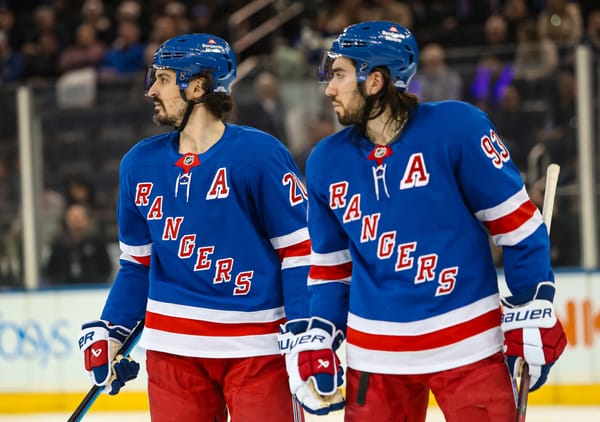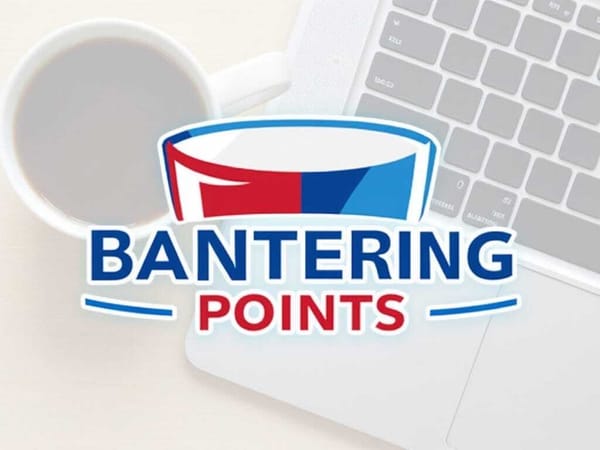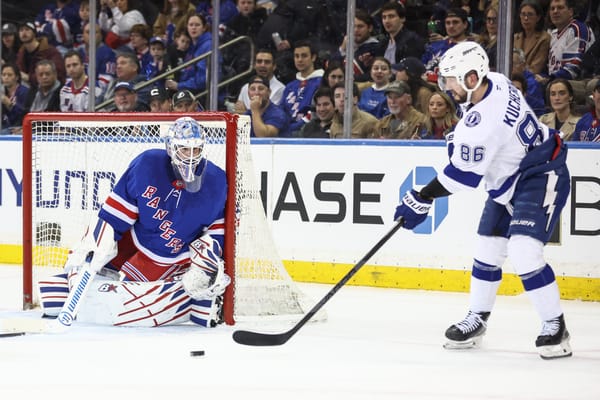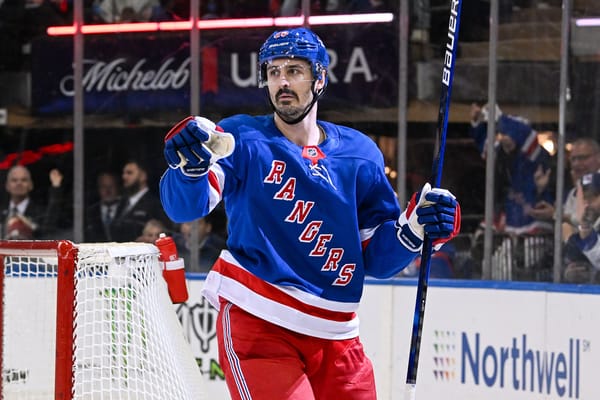A Look At What Artemiy Panarin Joining Rangers Has Meant for Both New York and Columbus
Artemiy Panarin and the New York Rangers are in Columbus tonight to take on the Blue Jackets for the Russian superstar’s first game back at Nationwide Arena since leaving Ohio.
The playmaking winger was a standout player in both the regular season and postseason throughout his two years in Columbus. While this return should be less dramatic than that of former Ranger and Blue Jacket Rick Nash, it’s a big moment given what his arrival and departure has meant to both franchises.
Since arriving on Broadway, Panarin has been as advertised and more. He currently sits ninth in league scoring with 33 points (12 goals, 21 assists) in 26 games played. Panarin brings an element to the Rangers that they’ve lacked for quite sometime, and he’s big reason why the team in the middle of their “build” sits three points out of the second wild card spot and four points out the first wild card spot with a record of 13-10-3 through 26 games.
Panarin joining the Rangers is also one of the reasons why the Columbus Blue Jackets find themselves three points behind the Rangers through 27 games, and seventh overall in the Wild Card race, as the Breadman was the key to the team’s offense last season.
The Blue Jackets weren’t only successful because of Panarin, as they also had Sergei Bobrovksy in goal, along with a talented blue line feauring Seth Jones and Zach Werenski, scoring winger Cam Atkinson, and some other secondary pieces. Plus, for their last playoff run, they had additions including Matt Duchene and Ryan Dzingel.
With that said, Panarin was the straw who stirred the drink and made his teammates better, and now that he’s gone there’s been a bit of a drop off in Columbus, but there’s also been a boom in New York.
Before we get into how Panarin leaving town has influenced his former linemates, let’s look at his current center Ryan Strome. Thus far the No. 5 pick from the 2011 draft has seen improvement in his counting stats, and his underlyings have been much better when he’s had the Breadman on his flank.
The impact is clear, and one wonders what Panarin might be able to do for youngster and fellow winger Kaapo Kakko if the two were given an extended period to develop chemistry. Or the influence he could have with Filip Chytil as his primary pivot.
Above I mentioned before, Panarin is ninth in league scoring, and it is no surprise he leads the Rangers. Columbus, on the other hand, doesn’t have someone in the league’s top 10. Instead the team that has gotten by with contributions by committee.
Pierre-Luc Dubois and Gustav Nyquist are the co-leaders in points for the Blue Jackets with 18 points, and after that there’s Zach Werenski (16 points), Oliver Bjorkstrand, Cam Atkinson, and Seth Jones with 15 points, Nick Foligno with 12, and Sonny Milano with 10. Everyone else on the team is in single digits, and that includes Josh Anderson who has just three points in 21 games after finishing the 2018-19 campaign with 27 goals and 47 points.
Of this list, the biggest player who has been impacted is Panarin’s former running mate Cam Atkinson, a player unlikely to match last year’s output of 41 goals in 80 games. Thus far the 30-year-old winger has a line that includes four goals, a 52.68 GF%, and a 48.11 xGF% driven by a 2.12 xGF/60, and a 2.29 xGA/60. per Evolving-Hockey.
At this point last year, Atkinson had appeared in 25 games, and his line included 16 goals, a 55.32 GF%, and a 49.4 xGF% driven by a 2.84 xGF/60 and a 2.91 xGA/60.
While Atkinson had success before Panarin joined Columbus, he’s struggled since his departure. When you break it down in terms of box score scoring, here are all the goals both Atkinson and Panarin were involved in up to this point last season.
In those 25 games, Panarin picked up an assist on six of Atkinson’s goals, four of which were primary, and Atkinson registered a secondary assist on October 27 in the second period of a 5-4 victory over the Buffalo Sabres.
This highlights some of the impact Panarin had on Atkinson, as he was involved in 37.5 percent of his goals to start the season. The same can’t be said of Atkinson with Panarin, who had a lone assist on one of the seven goals he tallied through the first 25 games. In terms of a full season view, here’s a chart showcasing when the two were on the ice together.
The other player worth looking at is Pierre-Luc Dubois, who was frequently the center for Panarin and Atkinson. This season he has a line of 10-8-18 in 27 games, a 48.44 GF%, and a 55.14 xGF% driven by a 2.51 xGF/60, and a 2.04 xGA/60.
At this point last year, the 26-game mark, Dubois played the majority of his time with the duo (who each missed a game in November). In that time, he earned a line of 16-11-27, a 57.07 GF%, and a 53.14 xGF% driven by a 3.09 xGF/60, and a 2.73 xGA/60 per Evolving-Hockey.
During that stretch, Dubois picked up a primary assist on four of Panarin’s goals. In that same span, Dubois scored 13 goals himself, and Panarin had two primary assists, and three secondary assists. In this instance Panarin was involved in 38.4% of Dubois’ goals scored, and Dubois was involved in 57.14% of Panarin’s.
And once again, here’s a full season view in terms of when both were on the ice.
Lastly, here’s a look at how the line, and the various combos produced over a full season.
Overall the sample is just 25 and 26 games respectively thus far, but based on the data from last season in context of what’s happened this year, the impact on the Panarin-less Blue Jackets is evident. On the most basic of levels, Atkinson’s P/GP production drop from 1.08 to 0.56 and G/GP drop from 0.51 to 0.15 highlights how Panarin is missed. Dubois has seen a decline too from 0.96 P/GP to 0.66, but it isn’t as stark as Atkinson’s.
In the case of Dubois, he is 21-years-old, and a player with skill and ability that ultimately could see him be someone who doesn’t need someone like Panarin to be successful. Thus far he’s sporting a respectable GAR of 4.5, and is worth 0.8 WAR.
Atkinson, however, turns 31 in June, has a GAR of 0.1, and a WAR of 0, and it is quite possible his best days are behind him. He has five more years on his deal at a cap hit of $5.875 million, and while it is by no means an albatross, it’s high for someone on pact to finish with 12 goals and 45 points.
Panarin was a force on his own in Columbus last year, and his solo numbers give context to how he helped Atkinson and Dubois to be successful.
This ability is a big reason why the Rangers gave Panarin a seven-year deal worth $81.5 million dollars, and thus far the early returns on their investment are very positive. He has a GAR of 9.3 (13th in NHL), and a WAR of 1.6 (10th) which is what you’d want to see from a player with a salary like Panarin’s.
Although the Panarin era in New York has been underway for quite some time, tonight in a way is a more ceremonial end on his time with the Blue Jackets, a stay that lasted 160 regular season games, and 16 playoff games.
It is a time to reflect on what has become of the Blue Jackets thus far without Panarin, and we’ve seen a glimpse of the impact Panarin has had on a team with some notable flaws. One can only imagine Panarin’s impact once the team is truly ready to contend — something fans got a glimpse of when the Blue Jackets went all in at the trade deadline last year.
Stats and standings as of 12/4/2019. Data via Evolving-Hockey, Hockey-Reference, Hockey Viz, and Natural Stat Trick unless otherwise noted.





